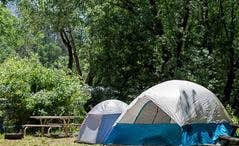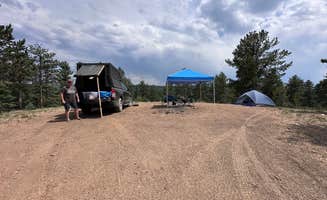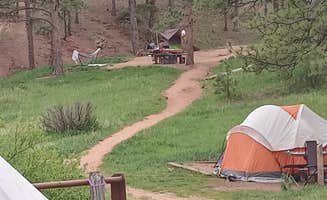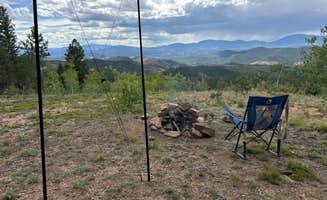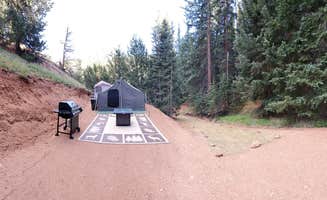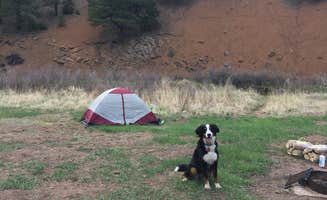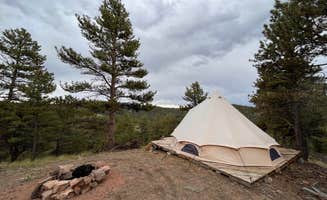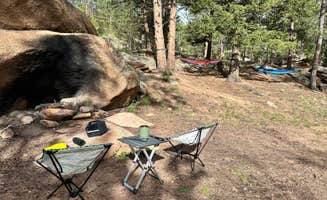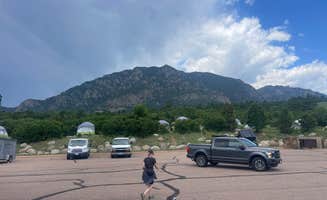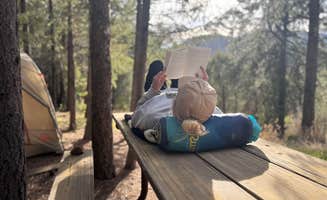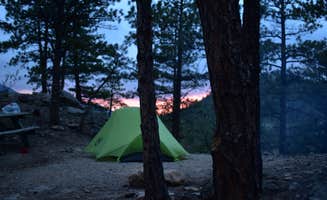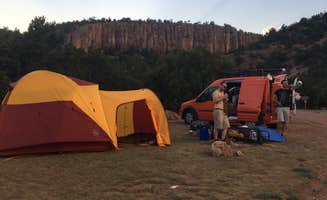Pike National Forest dispersed camping near Palmer Lake, Colorado offers more than forest campsites. The region sits at elevations between 7,000 and 9,000 feet, creating distinct weather patterns throughout the year. Summer nights remain cool with temperatures often dropping into the 40s even when daytime temperatures reach the 70s and 80s. Winter camping requires specialized gear as snow can persist into late spring at higher elevations.
What to do
Fly fishing opportunities: Platte River Campground provides direct access to quality trout fishing spots. "The river is right there and easy access. Or if you want to set up camp here and then drive up/down the road there are tons of fishing spots," notes one visitor to Platte River Campground.
Wildlife watching: Multiple tent campsites near Palmer Lake offer chances to observe Colorado wildlife in natural settings. "We had a fox as a neighbor!" reports a camper at Mt. Herman Road Dispersed Site 2. Other visitors mention seeing moose, deer, and small mammals throughout the area.
Rock climbing and exploration: Many dispersed camping areas feature rock formations suitable for casual climbing. A camper at Matukat Road noted, "Camped right underneath a few rocks and kid absolutely loved to climb rocks even with thin air in high altitude."
What campers like
Riverside camping locations: Several campgrounds provide direct water access. "These campgrounds have an amazing river right at your finger tips," writes a camper about Platte River Campground. Water access provides recreational opportunities beyond just fishing.
Seasonal stargazing: Clear mountain nights offer exceptional night sky viewing from many campsites. As one camper noted, "The stars here are incredible. However if the breeze is up it's gone chilling." Higher elevation sites generally provide the best star visibility.
Privacy options: Campers seeking solitude can find it by exploring further from main roads. "Every site is far away from another, especially if you drive further down. We didn't hear anyone late into the night due to the distance," says a camper at Dispersed Camping - Pike National Forest Divide.
What you should know
Road condition challenges: Access roads to many dispersed sites require careful driving. "The road gets rougher the further you go in but no problem for a 4x4. Even a small car could get to some nice sites," explains a visitor to Dispersed Camping - Pike National Forest Divide. Some forest roads become impassable after rainfall or early/late season snow.
Limited amenities: Most dispersed camping areas lack basic facilities. "It should be noted the higher up sites are right on the road, and the ones closest to the river are by no means far enough to deafen the road noise," warns a camper. Prepare for minimal or no toilets, running water, or trash service.
Temperature fluctuations: Mountain weather can shift dramatically. "We went the day after a snow storm and the road was decent. I guess snow plows go through often since there's nearby residential," reports a visitor to Dispersed Camping - Pike National Forest Divide. Pack for conditions 20 degrees colder than Denver forecasts.
Tips for camping with families
Kid-friendly exploration areas: Rock formations at many sites provide natural playgrounds. At Matukat Road Dispersed Camping, one visitor shared, "Plenty of exploring and climbing around. Although, pretty sure we encountered a side quest up on top of one of the mountains."
Safety considerations: Wildlife encounters require proper food storage and awareness. "Livestock do graze in the area, we saw a herd of cows that initially we thought were bears so we had a split second of worry before realizing what they were," notes a camper at Matukat Road.
Campsite selection timing: Arrive early for better site options, especially during peak seasons. "Arrived mid-afternoon on a Friday and had our pick of the sites, only saw one other group setup ahead of us," recommends a visitor to Matukat Road Dispersed Camping.
Tips from RVers
Parking restrictions: Many dispersed camping areas limit vehicle types or require parking in designated areas. According to a Lone Duck Campground visitor, "Park in the lot and walk to site. According to a camp host at lone rock, you can park and camp in your roof top tent in the lot for the same price. However, no trailers are allowed."
Clearance considerations: Forest roads often require higher clearance vehicles. "We didn't need to engage the four-wheel-drive so the only thing I would advise is you need some reasonable clearance to get all the way back in here," advises a camper at Matukat Road.
Supply planning: Remote locations mean limited access to stores. "Keep in mind there isn't a store or anything close by so be sure to carry in all you need. I don't recall water on site so better to be safe and carry plenty in," suggests a visitor to Platte River Campground.


